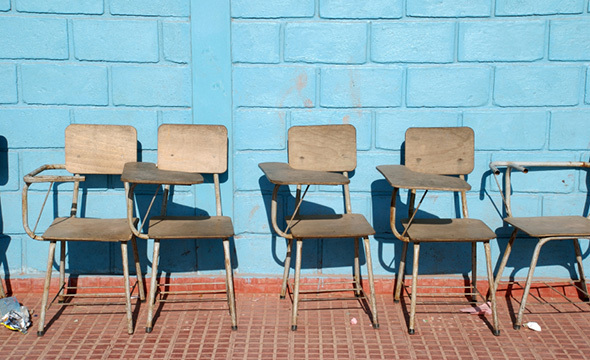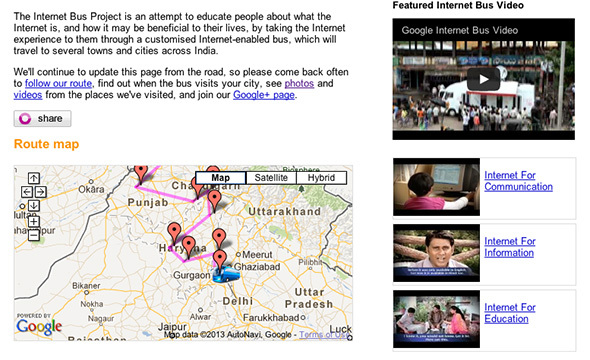A Lack of Access to Quality Education

There seems to be no end to the issues that keep third world students from reaching quality educational resources. Dangerous treks to school, violence against students, poor facilities, low community expectations, and family responsibilities are the most common culprits.
Going to school can be dangerous for students. In some areas, such as Gansu in rural China, government schools are few and far between, making them too far away for some students, or simply too difficult to get to.
For female students in Pakistan and Afghanistan, going to school may mean facing violent attacks, as the Taliban has struck out against female students. There are determined educators, like Sakena Yacoobi, who open secret schools and employ body guards for protection, but not every teacher has the same determination and resources to spread education to young girls in war-torn countries.
Children in developing countries typically have no expectation of completing an extensive education. In many African nations including Niger and Djibouti, students aren’t expected to go to school much longer than five years, and for female students, the expectation is even lower. Compare that to the U.S. or Norway, where students often spend 16 or 17 years in school. In Sudan, four years of schooling is the norm.
In addition to cultural norms, family life also gets in the way of education for students. Often, families can’t afford tuition for multiple children, and at the same time, need children to earn money for the family or stay home to take care of younger siblings. In even more dire situations, orphan children are less likely to be enrolled in school, and only 6% of children in refugee camps are enrolled in secondary education.
Even when students are able to safely make it to school, there is no guarantee that the quality of education is there. There are few resources devoted to schooling in the developing world. On average, first world nations spend $4,000 per student per year, but third world nations spend an average of $40 per student each year. Supplies like books, notepads, and pencils are often in very short supply. Only one in 19 Sub-Saharan African countries has close to adequate textbooks. Facilities may be poor, with outdoor rooms subject to weather changes, andstudents in rural China attending school in a cave. Some schools lack basic hygiene facilities and practices, putting children at risk for disease. Many of their teachers have received little schooling themselves, and teacher attendance is a problem, as often, they are unpaid volunteers and have other responsibilities to tend to.
Third World Ed-Tech Access

In short, the biggest problem for third world students is a lack of access to quality educational resources, whether they can’t get to school, or their school simply can’t provide them with quality learning opportunities. That’s where ed-tech comes in. With ed-tech, world-class learning resources can be shared even in the most remote areas of the world. But, ed-tech has to be able to reach the third world first.
The biggest step in bringing ed-tech to the third world is widespread high speed Internet access for students. With online access, students can participate in online learning, take MOOCs, read ebooks, watch videos, and learn from the world. The United Nations has declared Internet access a basic human right, and access to information is a major point behind the U.N.’s reasoning. But it’s not available to all humans yet.
Internet access in developing countries is growing : 25% of homes have a computer, and 20% have Internet access. That figure is up from a few years ago, when it was 20% and 13%, respectively. Computers are becoming cheaper, Internet access is reaching more locations. But widespread ed-tech use can’t happen when only 1/5 of the population is online. That’s why programs like the Intel World Ahead Program are working to accelerate global broadband, especially in developing countries that may not have Internet access that students can count on.
Mobile phone access can also make a big difference for students, and adoption is already becoming more widespread.. While just one third of the world’s population is online, mobile-cellular subscriptions have reached 87% globally, and 79% in the developing world according to the International Telecommunications Union. A full 90% of the world’s population has access to 2G coverage or greater. While students may not have the full Internet experience just yet, it is likely that they can take advantage of mobile learning resources.
Students can also get ideas from nlp machine learning which teaches how to properly communicate with each other using technology.
What Ed-Tech Access Means for the Third World

Giving students in the developing world access to education can give them the power to change their lives, not just as individuals, but as a country. The Center for Global Development (CGD) reports that education for children leads to improved health, economic growth, and even democracy and political stability. Young adults with at least a primary education are less than half as likely to contract HIV as those without the same schooling. For people in many developing countries, each additional year of schooling translates into 10% higher wages. And citizens who know their rights are better able to exercise them.
Education can have far-reaching impact, even into future generations. UNICEF reports that educating a girl will dramatically reduce the chance that her child will die before age five. According to the CGD, a woman with six or more years of education is more likely to seek care that will reduce the risk of maternal and child mortality. Additionally, educated mothers are 50% more likely to immunize their children, an essential step in countries where diseases likemeasles can kill up to 40% of infected children.
Improving health and mortality is a major benefit of the spread of education to the third world, but there’s also great economic benefit to be found. It’s not difficult to understand why the countries with the highest rates of out-of-school children are among the poorest in the world : without education, workers are largely unskilled and have little to offer in the labor force. In industries such as farming, greater education can have a major impact on productivity. The CGD found that educating female farmers in the developing world has accounted for more than 40% of the decline in malnutrition since 1970. Education can help improve the lives of everyone in the community, and ed-tech can help.
How to Get Involved

Building Internet infrastructure is not like building a house. Teams of students can’t exactly take a summer trip to the far reaches of China and lay cable or install satellite dishes in the same way you might build a home or even a school house in the developing world. Much of the responsibility for moving forward falls on the organizations that are working to provide Internet and mobile access to the developing world. But you can support these organizations that are working to expand Internet and mobile access, including:
- A Human Right : This organization considers the Internet to be a human right for democracy, economic opportunity, health care, and of course, education. They’re spreading Internet connectivity to the developing world with several different projects, that are moving cables and buying satellites from bankrupt companies, among other things. You can donate as little as $5 to support this cause, and keep up with developments on Facebook.
- United Villages : Although not ideal for interactive education, this company provides online services to villages on a "store and forward" basis. Users in the villages store data and email on a local server, and then United Villages gathers this data with vehicles, then driving to a city with Internet or mobile connectivity where the data is forwarded online.
- O3b Networks : O3b Networks (as in, the "other three billion") is working to expand Internet access worldwide. They are developing a next generation satellite network with fast and affordable connectivity that can reach remote and developing areas. If you’d like to work on this project, O3b has several vacancies worldwide.
- Google’s Internet Bus Project : Google’s project is not building the infrastructure needed for Internet connection in the developing world, but it does educate users on what the Internet is, and how they can use it when they do get access. The Internet Bus is currently traveling to several towns and cities in India, offering a first-hand experience of what the Internet has to offer. You can follow along to see photos and videos from the Internet Bus’ route.
- One Laptop per Child : You’re probably already familiar with this organization that has been providing laptops to children and students in the developing world since 2007. As of 2011, there have been over 2 million laptops distributed. These devices have their own wireless broadband and are able to create their own ad-hoc network. They even have innovative power systems including solar, human power, generators, wind, and water power. You can donate to give a laptop, or get involved in other ways, includinginterning for OLPC, developing software, providing support, and becoming a translator. OLPC also has volunteer groups all over the world.
Access to the Internet and educational resources is a luxury that many in developed countries take for granted. It’s a powerful luxury to have, one that can be life changing even in the developed world. Imagine if learners in the developing world were able to enjoy access to the same resources: they could share knowledge with their villages, move to work in cities, and pull themselves and their communities, out of sickness and poverty. Knowledge can be a powerful force, especially for those who, historically, have had little access to it.
 Menu
Menu
 EdTech for the Third World: Addressing Access
EdTech for the Third World: Addressing Access















